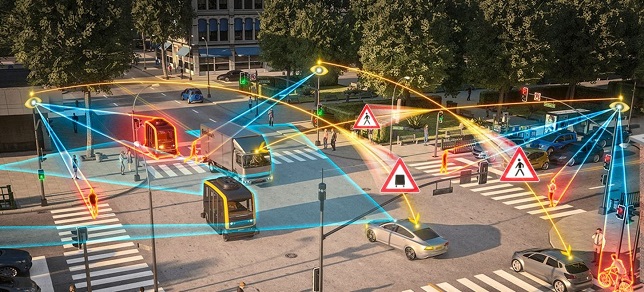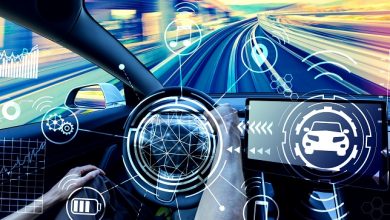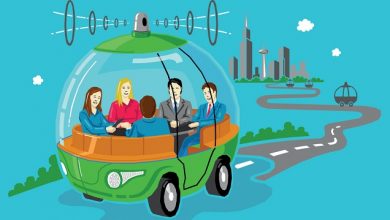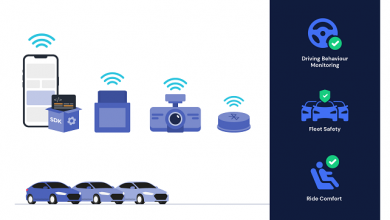Smart and Connected Mobility

The automotive industry is embracing a significant amount of digital transformation, which will change both the in-vehicle technologies and how the vehicle interacts with the passenger, environment, infrastructure, and other vehicles on the road. Today, vehicles are much more than a mode to get from one place to another. They are ‘Mobile Living Spaces’. And a critical aspect of this transformation is connectivity and smart mobility.
Connected and smart mobility technologies like navigation, GPS, and smart access have already become standard features in a modern car. But this is just the beginning of the transformation. We will see more growth in these areas in the coming years. As per a recent Markets and Markets report, even post-pandemic, the connected vehicle market is projected to reach USD 166.0 billion by 2025, at a CAGR of 25.2 percent from 2020 to 2025. Talking specifically about the Indian market, 80 percent of Indian customers think they will benefit from the increased vehicle connectivity, according to a report by Deloitte. These numbers just reiterate the fact that the automotive industry is at the cusp of transformation.
Changing mobility technologies:
Today, consumers want intuitive and on-demand information that makes their driving experience convenient, safer, and informed. For this to happen, cars need to be connected and perform complex tasks. For instance, smartphone integration has become a must-have feature for consumers today. The phone syncs with the car’s dashboard and navigation system the moment the driver enters the car. Taking one step ahead, a smartphone can also become a secure key for a car.
CoSmA makes the smartphone a digital vehicle key, effectively replacing conventional key fobs. It allows the user to access, unlock and start the car using his or her smartphone. The onboard architecture of the CoSmA solution also features a central electronic computer unit with a state-of-the-art secure element as certified secure storage for any digital vehicle key application. The vehicle owner can generate and manage multiple digital keys, and share them with friends or family.
As soon as the position of the authorized smartphone is precisely determined, the system allows the vehicle to be unlocked and the engine to be started without having to interact with the smartphone. As soon as authentication is provided by the backend key management system in the cloud, access to the vehicle is granted. Thus, ensuring secure access.
Apart from enhancing the in-vehicle experience and smart access, connected cars also contribute to the industry’s shared Vision Zero (Zero Fatalities, Zero Injuries, Zero Crashes) by exchanging safety-critical information between the infrastructure and nearby cars which eventually helps in reducing the number of accidents and casualties. One such example is ehorizon. It assists the vehicle to see around the corner and beyond sensor vision which ultimately makes driving more efficient, comfortable, and safe. Also in the cloud, eHorizon processes the data collected from the entire vehicle fleet with the aid of artificial intelligence and other technologies, which again increases the reliability of the predictions.
In the world of fleet management, connectivity opens up whole new possibilities and enables remote and anticipatory diagnostics. For instance, vAnalytics, is a cloud-based service platform that gathers data from various sources, analyzes, and creates services to solve pain points. Our platform is agnostic to the collection method, whether it be directly from a vehicle’s TCU, from an OBD dongle, or some other device.
With the increase in connected technologies like CoSmA, vAnalytics, and ehorizon in the vehicle, software in the vehicle is also bound to increase.
The connected car uses big data to continually evolve the software-defined car, enabling them to deliver premium connectivity services and over-the-air (OTA) upgrades to the car throughout its lifecycle. This allows add-ons such as new features, but also essential updates to firmware and cybersecurity, to be rolled out. The requirement for OTA for real-time updates and security patch management will become more crucial as the vehicle starts interacting with other components in the ecosystem like other vehicles, smart infrastructure, etc., through V2X communication.
However, consumers are still apprehensive of the use of connectivity-enabled technologies in remote locations where high-speed network connections are not available. In such cases, Cellular-V2X allows an exchange of time-sensitive and safety-critical information, for example – about warnings of potentially hazardous situations, even in areas without mobile network coverage. Designed to enhance device-to-device communications, C-V2X technologies complement and extend existing cellular capabilities, enabling direct communications without requiring the involvement of the network.
As the quantum of communication among different components of the ecosystem increases, the amount of data produced also multiplies exponentially. Naturally, this requires high computing power to ensure optimal and seamless performance. High Performance Computers (HPCs) can single-handedly do the work of multiple independent control systems, which otherwise required several processing units and added complexities, thus paving the way for the future of vehicle connectivity.
How can India facilitate this transition?
While the market for connected vehicles in India is on the rise, the infrastructure and ecosystem need to go hand-in-hand. Auto component suppliers would play a very important role in enabling this move. There is a need to upgrade the manufacturing systems in the auto components sector and to be ready to adapt to new technologies by improving design capabilities. There is also a huge requirement for sensor and clean energy solutions to be able to fund the upcoming vehicle connectivity concepts.
Telecommunications and informatics service providers will also play a major role as they need to collaborate with specific solutions for automotive applications. Telecom service providers in the country will also need to up their game and offer seamless data services and networks. A reliable source of 5G connectivity can dramatically impact the capabilities of connected vehicles. The same will play a significant role in enabling vehicle-to-vehicle and vehicle-to-infrastructure communication at a pace and capacity that was not possible with previous networks.
Such high-speed connectivity solutions facilitate global market players to provide the domestic market with advanced driver assistance technologies that can be paired with V2V communications. For instance, the camera that detects new roads, new traffic signs, potholes, diversions, and blockades, etc., feeds the new map data to a solution like eHorizon, which provides a preview of the road ahead to other control units in the vehicle enabling fuel-saving in form of predictive cruise and transmission control, safety improvements such as lane departure warning and Predictive ESC (electronic stability control). Acting as a virtual sensor, eHorizon provides a friction map based on estimated friction values as well as on predicted road surface conditions and warns the driver and intervene before a vehicle velocity is likely to cause a stability critical situation. eHorizon calculates the route preview based on highly accurate map data and dynamic information for the current vehicle position. The data is made available for other vehicles on the network too.
A move towards ‘Holistic Connectivity’ is required, where embedded systems inside the vehicle (e.g. High-performance computing, gateways, or sensors) and systems outside the vehicle (e.g. edge computing, cloud) interact more efficiently to achieve advanced levels of autonomous driving capabilities.
Conclusion:
Tomorrow’s vehicles will be an integral part of the internet. In B2B logistics, in particular, 100 percent of all commercial vehicles will be connected in the future. The digital value chain will make fleets more efficient, more customer-focused, and safer. Organizing traffic in the future will also require smart mobility solutions such as sharing or multimodal transport services. Smart mobility has the potential to reduce accidents, traffic congestion, and emissions. Further, smart mobility will also improve the overall driving experience, and contribute to technologies that Connect, Inform, and Integrate. In India, connected vehicles are already on the rise. With 5G technologies and smart cities coming into the picture, we will move towards holistic connectivity enabling smarter mobility.
Author :

Harikrishna Khandavilli
R&D Head – Connected Car and Networking (CCN) business unit &
Vehicle Networking and Information (VNI) Central Engineering
Continental Automotive India
Published in Telematics Wire





